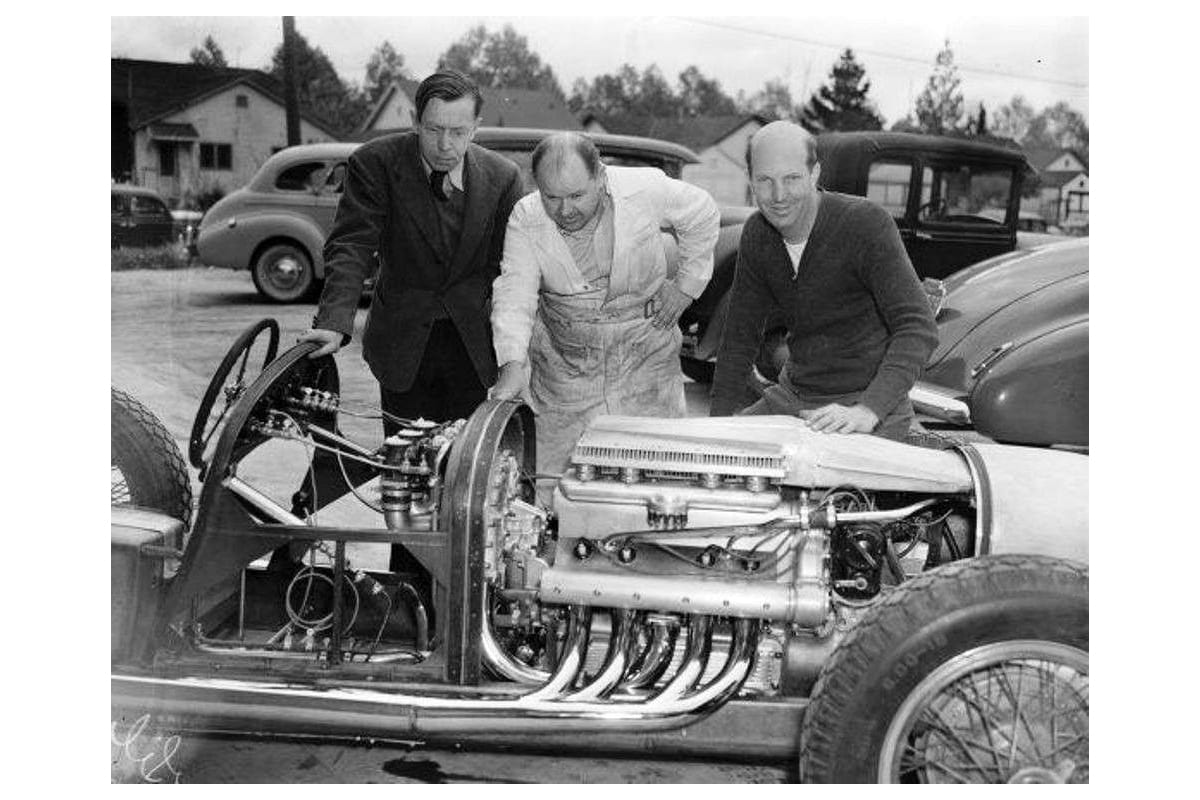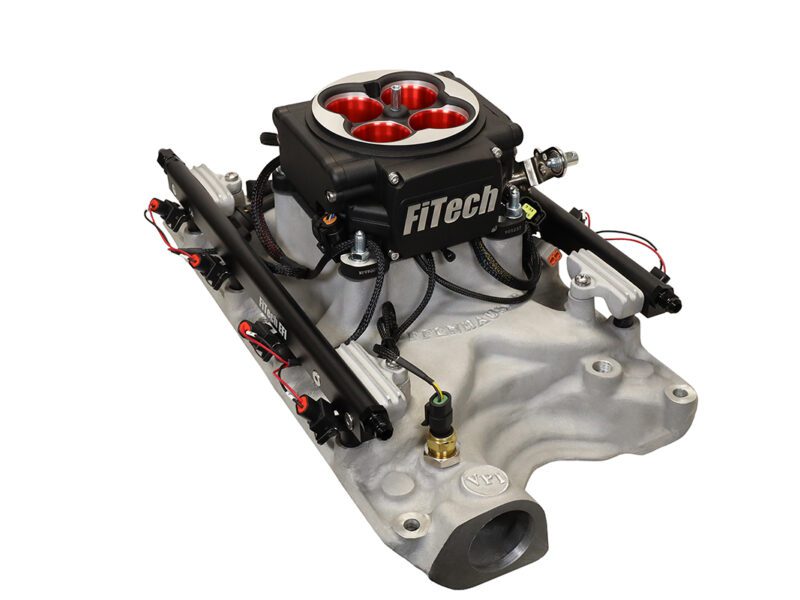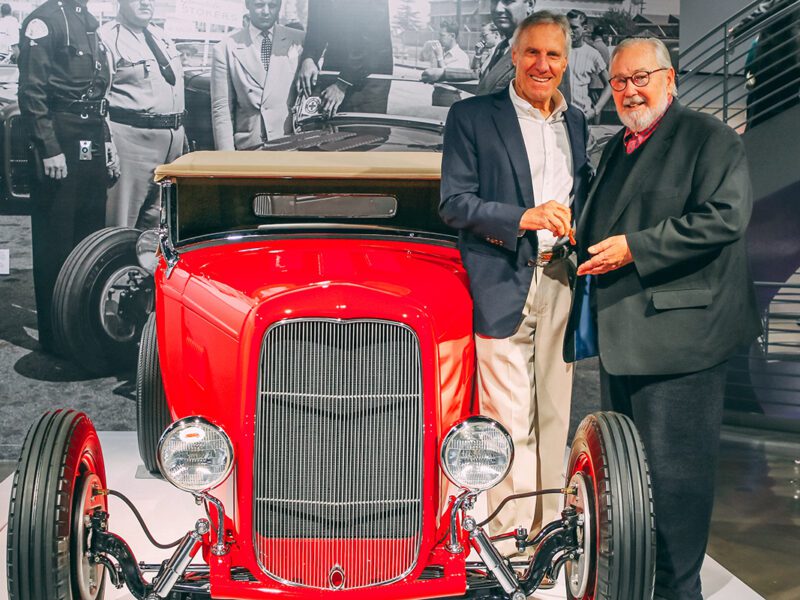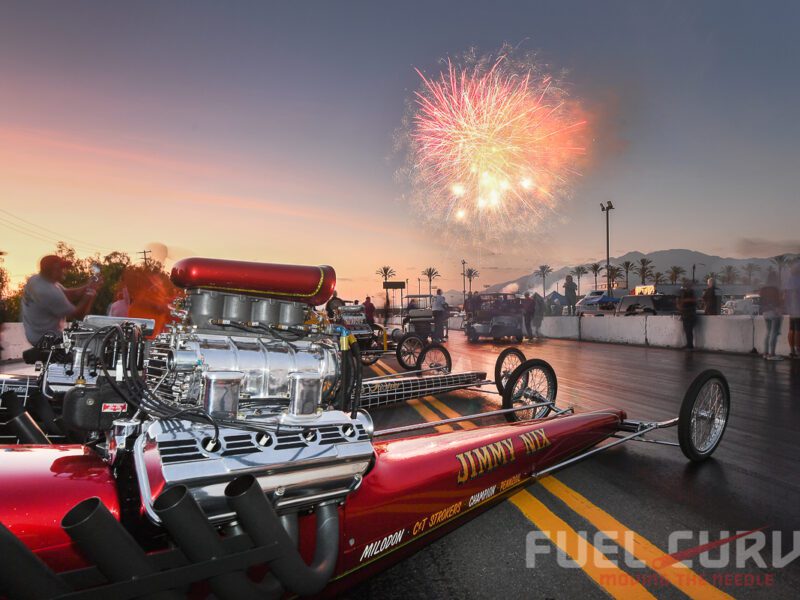Fred H. Offenhauser “Offy” – King of the Indy Powerplants
Every car guy older than 30 knows (or should know) the name Offy. It’s shorthand for Offenhauser, the last name of Fred H. Offenhauser, and the moniker of the all-conquering four-cylinder engine that dominated the Indianapolis 500 during the mid-20th Century. Among the many legendary figures who have etched their name in the Brickyard’s 108-year history, Offenhauser is one of the most significant.
A native Los Angeleno, Offenhauser was born to German immigrants during the industrial revolution – 1888 to be exact – at a time when the internal combustion engine was taking its first breaths. The two grew up during the same period, and by the time Offenhauser reached 25 in 1913, motor racing was beginning to flourish. The first Indy 500 took place in 1911.
 Offenhauser was fascinated early on by machining and industrial manufacturing. At age 12, he would run from his home in Los Angeles to the industrial district and watch the heavy machinery rumble at Llewellyn Iron Works. Later he talked his way into a job there, beginning his life-long devotion to mechanical design and development. “Working there,” he once said, “was like being in heaven.”
Offenhauser was fascinated early on by machining and industrial manufacturing. At age 12, he would run from his home in Los Angeles to the industrial district and watch the heavy machinery rumble at Llewellyn Iron Works. Later he talked his way into a job there, beginning his life-long devotion to mechanical design and development. “Working there,” he once said, “was like being in heaven.”
Next, he became an apprentice machinist for the Pacific Railway, earning journeyman status by age 21. Later he was elevated to toolmaker and he maintained the machinery that kept the railways running. His stint at Pacific lasted eight years.
In 1913, Offenhauser sensed an opportunity to capitalize on the rising popularity of the automobile and applied for work at a company building carburetors, owned by one Henry A. Miller, who also had become a successful race car builder. At the time, Southern California included nearly a dozen venues for auto racing, including the famed Gilmore and Ascot speedways. Offenhauser quickly earned the respect of Miller and became overseer of designing special tools and production fixtures.
Enter Eddie Rickenbacker. Rickenbacker was a successful racing driver of the era. He drove a Peugeot with its advanced double-overhead cam, four-valves-per-cylinder powerplant. (Yes, it was the crafty French who created the blueprint for the modern racing engine.) However, the Peugeot motor was faster than it was reliable, and after one frustrating DNF, Rickenbacker unloaded it on Miller and Offenhauser. Fix it, he said.
Intrigued by the renowned Peugeot powerplant, the team disassembled it to learn its secrets. Offenhauser and Miller modified the engine, switching to aluminum pistons, lighter connecting rods, and replaced the “splash” oil system with a pressurized one. Offenhauser did the machine work.
For the next decade (with a break for WWI when Miller and Offenhauser switched to military projects) Miller and Offenhauser refined the Peugeot design and incorporated elements to various other Miller motors. Among his clients was the Barney Oldfield, whose Golden Submarine car was powered by Miller/Offenhauser four-banger with a single-overhead cam.
By the late-1920s, Miller was on top of the racing world, in large part to Offenhauser’s influence and that of engine designer Leo Goossen. Miller cars made up 83 percent of Indy 500 entrants between 1922 and 1929, winning in 1923, 1926, 1928 and 1929 using Miller’s supercharged straight-eight engine based on the original Peugeot design. But in 1930, Shorty Canton placed second at the Speedway using a 183-cubic inch four-cylinder Miller engine, ushering in the four-cylinder era.
Miller’s dominance ended not by a faster competitor but by rule changes and the economic collapse of 1929. In order to lure the American car makers back to Indy, the Speedway – now run by Rickenbacker, who became an American war hero as the leading WWI combat flying “ace” – outlawed supercharged engines in order to promote “stock-block” passenger car engines of 366 cubic inch displacement.
Seeing the writing on the drawing board, Miller sold the company to a group of investors – but the company still fell into bankruptcy. Offenhauser then purchased all of Miller’s patterns and equipment and began fine-tuning the four-cylinder engine and slapping his name on the valve covers. The Offy’s reign of success was about to begin.
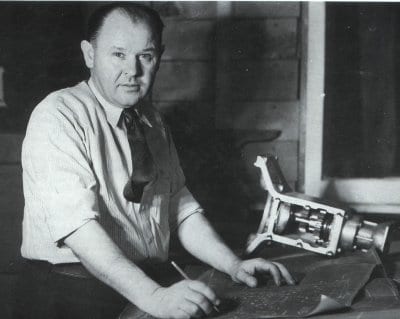 And what a reign it was. From 1934 through the 1970s, the Offenhauser engine dominated American open wheel racing, winning the Indianapolis 500 27 times. The early days of this run were under Offenhauser’s guidance, but he sold the company to Louis Meyer (the three-time 500 winner) and Dale Drake in 1946. From 1950 through 1960, Offenhauser-powered cars were undefeated at the Brickyard, earning all three podium positions, and pole position in 10 of the 11 years.
And what a reign it was. From 1934 through the 1970s, the Offenhauser engine dominated American open wheel racing, winning the Indianapolis 500 27 times. The early days of this run were under Offenhauser’s guidance, but he sold the company to Louis Meyer (the three-time 500 winner) and Dale Drake in 1946. From 1950 through 1960, Offenhauser-powered cars were undefeated at the Brickyard, earning all three podium positions, and pole position in 10 of the 11 years.
The engine design almost guaranteed success; its mono-block construction proved invulnerable to head or cylinder stud problems and allowed for higher cylinder pressures. The standard 252c.i. Offy sported a robust 15:1 compression and pumped out 420 horsepower.
Offenhauser and Meyer-Drake also created the Offy in various displacements for different classes of racing, including the dominant 91c.i. midget motor (debuted by Fred way back in 1934), the 220c.i. Sprint car version, and the 159c.i. turbocharged engine for Indy in the late-1960s and ’70s. Those final turbo motors cranked out 770 ponies using 24-inches of boost. The Offy found victory lane for the final time at Trenton in 1978, with Gordon Johncock behind the wheel.
Offenhauser passed away in 1973 at age 84. His contribution to motorsports did not go unnoticed. Since his death he was inducted into the Indianapolis Motor Speedway Hall of Fame, the International Motorsports Hall of Fame, the National Sprint Car Hall of Fame, and the National Midget Auto Racing Hall of Fame. Considering his influence on Henry Miller’s glorious dominance of American racing in the first half of the Century and the Offy engine’s mastery in later years, Fred Offenhauser stature as a legend of hot rodding is assured.
Offy. Remember that name.

